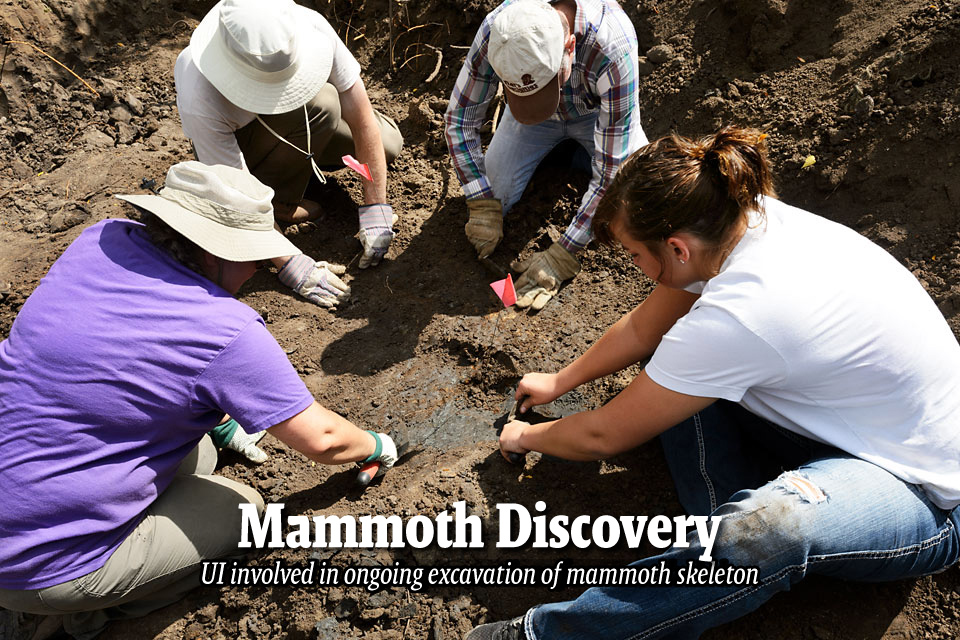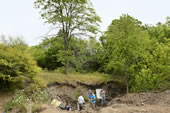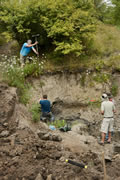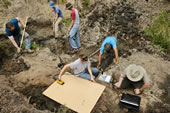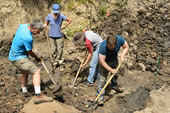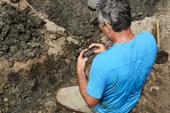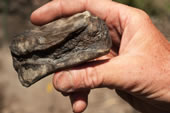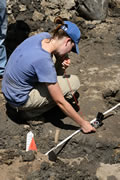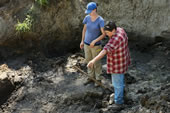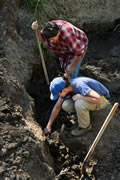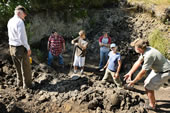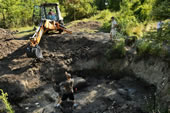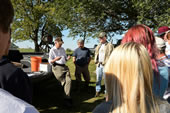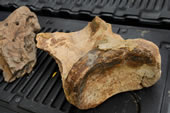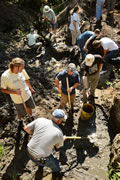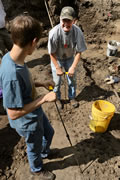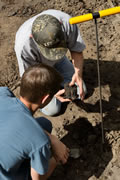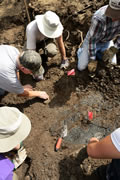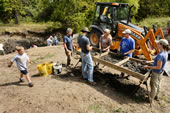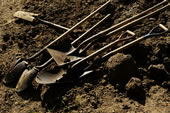-
Page Navigation Links:
- Skip to Site Navigation Links
- Skip to Features

- The University of Iowa
- Spectator
- Monthly News for UI Alumni and Friends
Two years ago, an Iowa farmer and his sons were out looking for berries near their home in Oskaloosa when they stumbled on what appeared to be an enormous bone sticking out of the dirt. It turned out to be a mammoth bone—and potentially the most important mammoth discovery in Iowa.
The family recently enlisted University of Iowa experts to aid in the excavation. The UI Museum of Natural History, with the cooperation of the Department of Geoscience and the Office of the State Archaeologist, has organized an ongoing excavation and scientific evaluation of the find. So far nearly 50 bones have been recovered, including an impressive femur, multiple ribs and vertebrae, and a few toe bones. The discovery of both large and small bones within the same area is important as it means the mammoth was buried where it died, with little bone displacement—the entire skeleton may still be in the same area.
Although mammoth bones aren’t too uncommon in this area, finding a mostly complete, largely undisturbed skeleton is extremely rare. While there are quite a few records of mammoths from Iowa, almost all are individual bones. To learn more about how this mammoth lived, researchers will test the bones for carbon, nitrogen, and oxygen isotopes. Soil and botanical samples also have been taken to help identify how the land looked when the animal roamed Iowa.
Click on the thumbnail images below to get a glimpse of the excavation and its discoveries.—Miles Dietz
—photos by Tom Jorgensen
© The University of Iowa 2009
